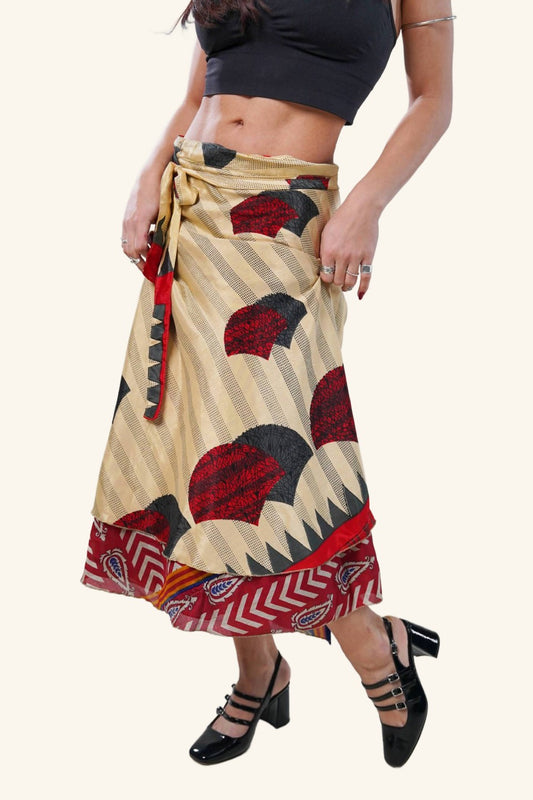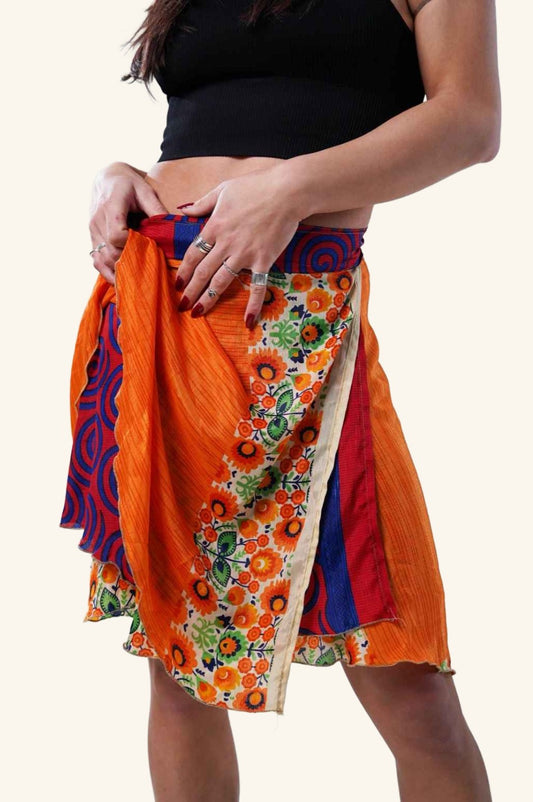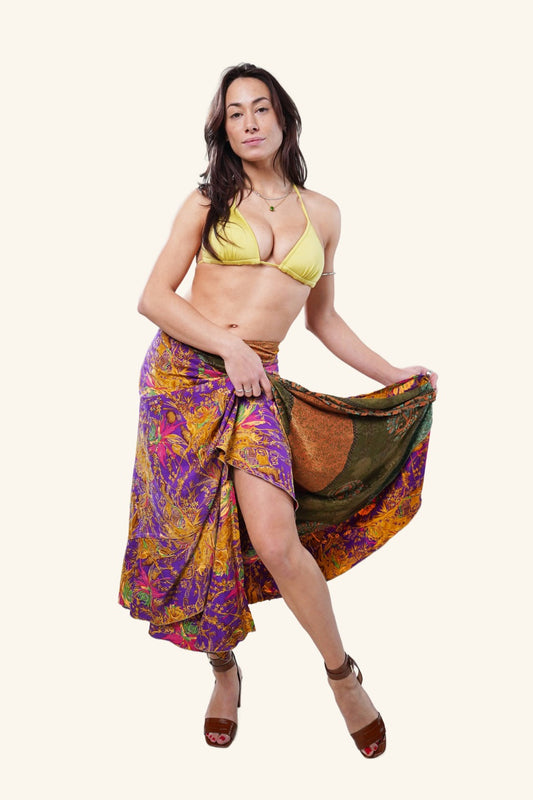
From sari to wrap skirt
Share
The history behind our wrap skirts
Our wrap skirts have a rich history, as they are made from vintage saris. You may have heard of a sari; it is intrinsically linked to India and its rich culture.
What does "sari" mean?
The word "sari" comes from Sanskrit and means "strip of cloth." For many Indian women—and some men—a sari is much more than just a piece of clothing. These fabrics, often made from silk, cotton, or linen, represent national pride, traditional and modern craftsmanship, and reflect the country's diversity. They are an important cultural symbol, showcasing how different regions have developed unique styles and patterns.
From sari to wrap skirts
What makes our wrap skirts unique is that they are made from recycled saris, honoring Indian culture while making an eco-conscious choice. Each sari, and thus each wrap skirt, tells a story. By reusing these vintage fabrics, we give them new life while contributing to a more sustainable world.
Styles and patterns
Every region in India has its own traditional patterns and weaving techniques for saris. Whether it’s the colorful embroidery from Gujarat or the finely woven silk from Tamil Nadu, the saris we use for our wrap skirts feature a variety of unique patterns and colors. This means each skirt is one-of-a-kind and carries a piece of Indian culture.
How to wear a wrap skirt
Our wrap skirts are versatile and easy to wear. Pair them with a simple t-shirt or blouse for a casual look, or dress them up with a nice top and accessories for a more chic appearance. Thanks to the adjustable fit, a wrap skirt always fits perfectly, regardless of your figure.
From traditional to modern
While the sari is a traditional garment, transforming it into wrap skirts is a modern approach that aligns with contemporary fashion. This versatility makes the wrap skirt beloved by women worldwide, as it offers a perfect balance of style, comfort, and culture.
A sustainable choice
In addition to the cultural value of saris, our wrap skirts also have a positive impact on the environment. By using reused fabrics, we contribute to reducing textile waste and promote slow fashion. This means that when you wear one of our garments, you're not just wearing something beautiful; you're also supporting a healthier planet.




